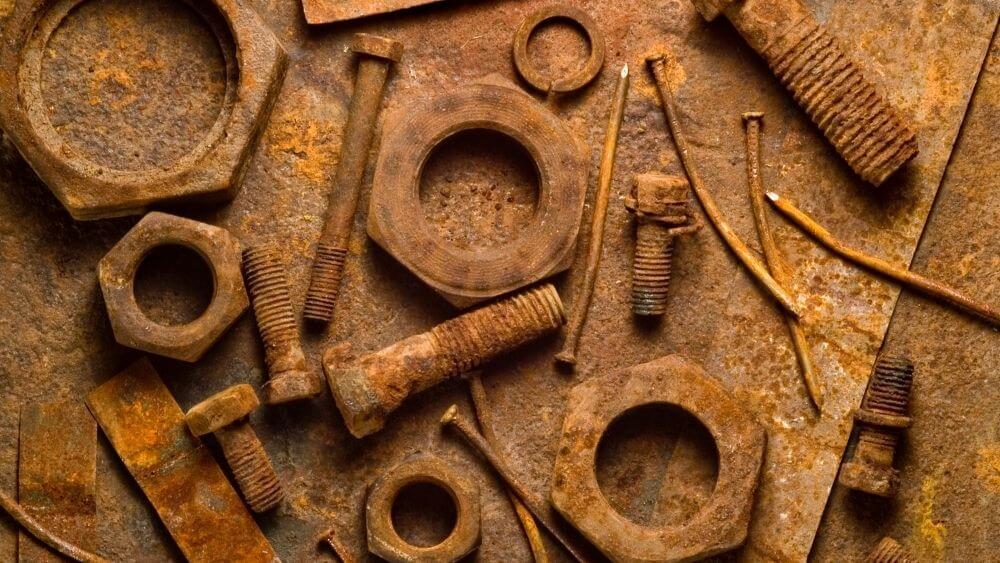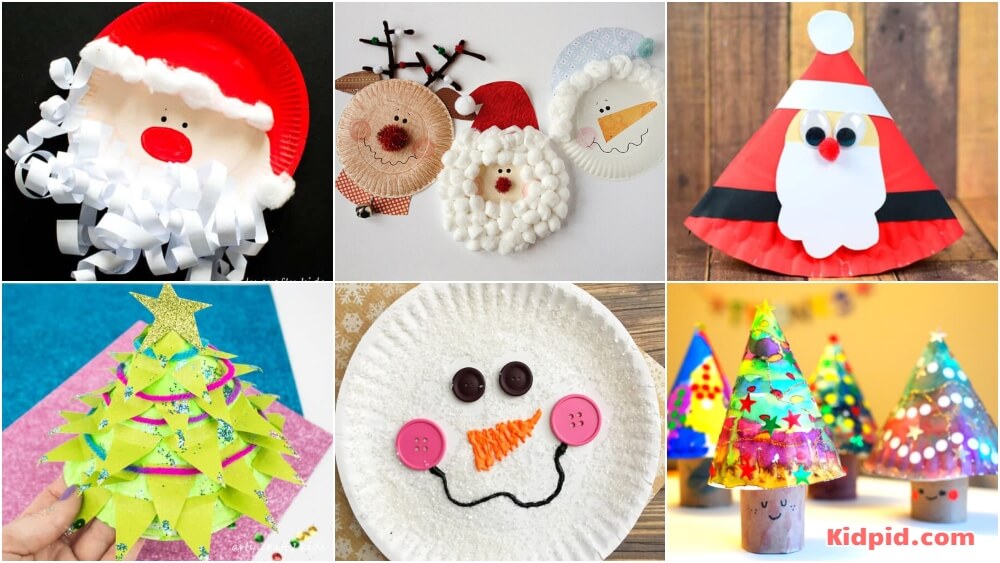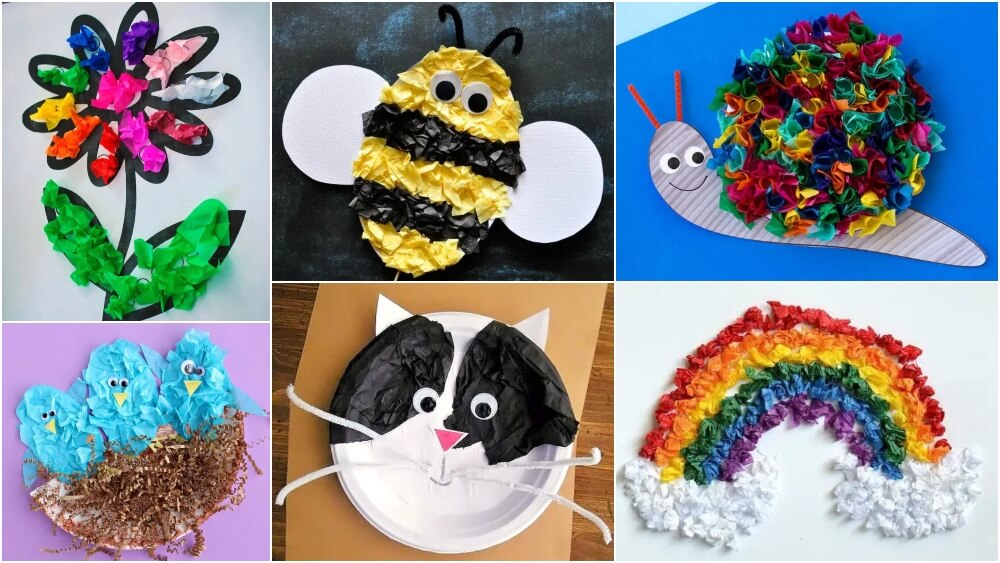Materials: Metals and Non-Metals

Many things that we use on a daily basis are made up of materials that are either metals or non-metals. Let’s learn the physical and chemical properties of metals and nonmetals to understand why we use them.
Contents
Physical Properties of Metals:
- Metals such as iron, aluminium, etc can be beaten into a sheet. This property by virtue of which metals can be beaten into sheets is known as malleability.
This is a characteristic property of metals. For example, the aluminium foil that is used for wrapping food items is obtained by beating aluminium metal into thin sheets.
Metals are lustrous and hard
- Metals are good conductors of electricity. Aluminium and copper wires are very commonly used in electrical circuits. The property by virtue of which metals can be drawn into wires is known as ductility.
- Metals are good conductors of heat. You must have seen kitchen utensils with plastic handles. This is because the metal cookware becomes hot while cooking and due to conduction the handle would also become hot. That is why the handle is made of plastic like bakelite.
- Metals produce a ringing sound and hence they are called sonorous. For example, temple bells are made of metals and produce a ringing sound. Imagine a similar bell made of wood. It would not make a ringing sound.
Physical Properties of Non-Metals:
- Non-metals are not malleable; they crumble into a powdery mass when beaten with a hammer.
Non-metals are soft and dull
- Non-metals are poor conductors of electricity; they are not ductile. This is why coal and lead are not used for making electrical wires.
- Non-metals are poor conductors of heat.
- Non-metals are not sonorous.
- Examples of non-metals include oxygen, sulphur, phosphorus, carbon, etc.
Chemical Properties of Metals and Non-metals:
Reactivity With Oxygen:
- We have all seen things made of iron rust with time. Rusting is nothing but the reaction of iron with oxygen in the presence of moisture.
- Burning of magnesium ribbon in air yields a white ash. This ash is nothing but the oxide of magnesium.
- Powdered sulphur upon heating yields sulphur dioxide gas.
- Thus, metals and non-metals both react with oxygen.
Determination of the nature of oxides of metals and non-metals:
- Dissolve the ash obtained from burning the magnesium ribbon in some water. Red litmus paper turns blue upon reacting with it. This shows that the oxide is basic. Thus, in general, oxides of metals are basic in nature.
- Heat powdered sulphur in a glass tumbler and add water after burning the sulphur. The sulphur dioxide gas upon reacting with water produces sulphurous acid which turns blue litmus red.
Sulphur dioxide (SO2 ) + Water (H2O) → Sulphurous acid (H2SO3 )
Therefore, oxides of non-metals are generally acidic in nature.
Reactivity with water:
- Metals react with water but their reactivity varies. For example, sodium is highly reactive with water and produces a large amount of heat; for this reason it is stored in kerosene. Iron on the other hand reacts very slowly with water – formation of rust takes a long time.
- Non-metals do not usually react with water. However non-metals may be highly reactive with air and such non-metals are stored in water. For example, phosphorus catches fire if exposed to air and is hence stored in water.
Reactivity With Acids:
- Metals react with acids to release hydrogen gas. This can be tested by the pop test.
Pop test – Take a magnesium strip in a test tube and add hydrochloric acid till the strip is completely submerged. Cover the test tube to prevent the gas from escaping. Now bring a lighted matched close to the mouth of the test tube. You will notice that the match goes out with a loud ‘pop’ sound indicating the presence of hydrogen gas in the test tube.
Non-metals usually do not react with acid
Reactivity With Bases:
- Metals react with sodium hydroxide(base) to release hydrogen gas. This can be confirmed with the pop test.
- Non-metals react with bases through complex reactions.
Displacement Reactions:
Metals exhibit displacement reactions.
- Take 50 ml of CuSO4(copper sulphate) solution(blue in colour) in a 100ml glass beaker.
- Add a teaspoon of zinc granules to it. Leave the system undisturbed for some time.
- You will observe that the blue colour of the solution has been lost and red powdery deposits of copper are obtained at the bottom of the beaker.
- In this process, the more reactive metal zinc displaces the less reactive metal copper from copper sulphate; this is known as a displacement reaction.
- Now, if copper turnings are added to an aqueous solution of zinc sulphate will there be any change? No. This is because copper is less reactive than zinc and so it cannot displace zinc from zinc sulphate i.e., displacement reaction will not take place in this case.
- Similarly, iron nails in a copper sulphate solution can displace copper but copper turnings cannot displace iron in an iron sulphate solution. This shows that iron is more reactive than copper.
- Again, iron nails cannot displace zinc in a zinc sulphate solution i.e., zinc is a more reactive metal than iron.
Uses of Metals and Non-Metals:
- Metals such as copper and aluminium are commonly used in electrical wires.
- Iron is used to make alloy steel which is used for construction of bridges, making cutting tools, bicycle chains, rifle barrels, etc.
- Iron is used for making industrial machinery, aeroplanes, trains, satellites, cooking utensils, water boilers, gadgets, etc.
- Non-metals play a very crucial role in our life. Oxygen is the most important non-metal as we need it for respiration.
- Chlorine is very important for its use in water purification.
- Iodine is used as an antiseptic for cleaning and dressing wounds.
- Two non-metals, nitrogen and phosphorus are important and essential components of plant fertilizers.
- Phosphorus and sulphur are used in the manufacture of firecrackers.
Elements and Atoms:
Any material, metal or non-metal, which cannot be broken down through chemical reactions or heating or cooling or electrolysis, is called an element. Carbon, iron, sulphur, copper are all individual elements.
The smallest unit of an element is known as an atom. A sample of an element only contains atoms of one type i.e., atoms of one element. For example, an atom of gaseous sulphur is identical to an atom of liquid or solid sulphur.
There are only 94 known elements on this planet. The various materials around us are all made up of combinations of multiple elements.
Summary:
- Physical Properties of Metals
- Malleability
- Ductility
- Sonorous
- Physical Properties of Non- Metals
- Chemical Properties of Metals and Non-Metals
- Displacement Reactions of Metals
- Uses of Metals and Non-Metals
- Elements and Atoms





Responses